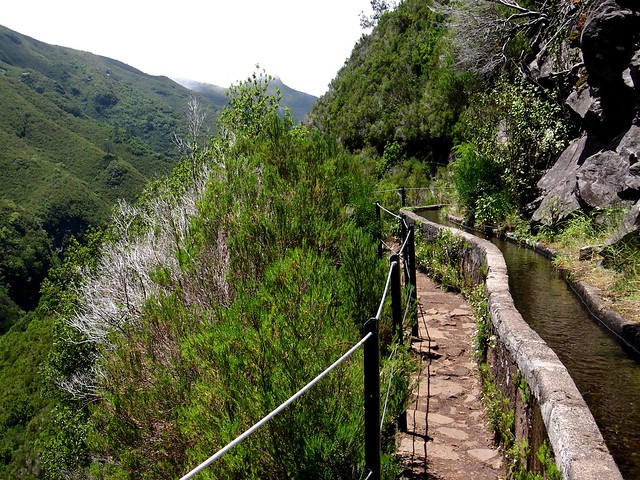Madeira is well known as an excellent walking destination, with many miles of trails crossing the island along its coast and up into its mountainous interior. Walkers will at some point encounter the ‘levadas’ of Madeira and these provide a fascinating insight into one the major challenges faced by the early settlers of the island.
What are levadas?
A levada (meaning led or carried) is a channel for carrying water. Early settlers in the late 15th century were faced with the problem of getting adequate water to irrigate the dry southern and eastern parts of the island (the areas best suited to agriculture). The mountainous west had no shortage of rain, so a method needed to be devised to get rainwater transported across the island.
Around 2500 km of narrow channels were dug, including around 40 km of tunnels, to bring the rain water from the mountain to the farmers’ lands. The work would not have been easy given the hilly terrain of the island but the critical need to redistribute water meant that levadas were still being constructed in the 20th century. Most of these narrow canals have maintenance paths alongside them built by the original labourers.
Water ways to walking trails
The levadas today not only provide water to the south of Madeira but also help supply hydro-electric power. The paths alongside them meanwhile have become a network of very popular walking trails and offer a great way to see the island. Using the levada as a marker you can follow a number of trails through the mountains or along the flatter southern parts of Madeira. Some of the classic levada walks can stretch for up to 25km or more, so require a full day of hiking to complete. A few cling to the edge of the mountains are may not be suitable for those with a fear of heights, while others require walkers to follow the water channels as they tunnel their way beneath the rocks. If you hike two or three levada trails while you’re in Madeira you are guaranteed a different experience each time.
Once you’ve walked the trails and want to learn more about the lives of the early settlers, head to the Madeira Story Centre in Funchal. This modern interactive museum tells the story of the island from its volcanic origins through to its early settlers and right up to the 21st century and the traditions and customs that make Madeira so distinctive. It is in looking at the early days of the settlers however that you’ll learn more about the unique 500 year old network of waterways that have helped make Madeira such a popular hiking destination.






I’d love to one day be able to explore this side of my cultural heritage.